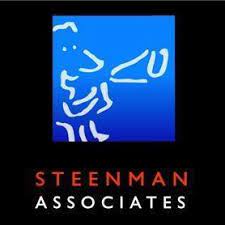Audience growth, advances in features, targeting and data; support increased ROAS for OTT

HERE IS A PREVIEW OF MY NEXT ARTICLE FOR DEALER MARKETING MAGAZINE.
Roughly half of US adults over 18 use at least one OTT service¹, which translates into about 182 million OTT subscription video service users². OTT ad spending has seen double-digit increases in recent years, with +54% YoY growth in 2018, 41% in 2019 and 32% in 2020³.There is no going back; cord-cutting is here to stay and this presents new and exciting opportunities for local and regional dealers. ¹ (OpenX), ² (eMarketer), ³(MagnaGlobal)
Before diving in, let’s take a minute to review three key terms that are used interchangeably and sometimes incorrectly. “OTT” refers to the delivery mechanism for TV content online, usually through streaming or video on demand served “over the top” of traditional providers. CTV stands for ‘connected TV’s” which access programs through a DEVICE, like a smart TV, ROKU stick or gaming console, to watch TV content online. Lastly, “Programmatic” is a METHOD of purchasing video ads from the various networks and providers.
Improved Targeting
OTT ads can be targeted by geography (typically zipcodes or cable zones if you are buying it from a cable provider), demographics (age, sex) and for automotive advertisers, you can select things like ‘in-market for an SUV’, or “in-market for a Toyota”. Using a combination of POLK and Experian data, you can both include and exclude certain buying segments (want an SUV buyer, but don’t want a Nissan buyer, for example). The more you narrow the segments, the more you pay and you want to be careful not to narrow the segments to the point that you are working with too small of a data set. Typically a good rule of thumb is to look at the budget you want to spend (3k to 5k per month is a good place to start), look at the fact that you want to reach each viewer with a reasonable frequency (say 5x monthly), and see what size population and targeting that leaves you with- and adjust accordingly from there.
Responsive Content
Whereas a basic OTT campaign can run as a mix of connected TV (big screen), or adding other devices (laptop, tablet, mobile) there is also an opportunity for dealers to generate additional content that can be served alongside the video ad while the ad is on-screen. This is referred to as “responsive” or right-rail content (since it often sits to the right of the video on screen). This information is pulled directly from the dealers website and will usually be monthly offers (leases, payments, etc.) customized by vehicle. They are not static embedded in the ad but rather dynamic to change on TV as the offers on your website change. The obvious advantage is that consumers are served up to the minute information relating specifically to the vehicle(s) with which they have shown purchase intention. There is also the additional benefit of reducing the time and production cost to update the video content whenever the offers change.
Finding the best program and value for you.
OTT ads are typically delivered on a variety of devices within the household including TV’s, desktop or laptop computers, tablets or mobile phones. Running an ad on the largest screen in the house, in a long form TV show is a much different environment than running the same ad on a laptop or cell phone. Ads watched on the ‘big screen’ are fully watched nearly 98% of the time. Contrast that to YouTube or facebook where most ads are viewed for under :05 seconds.
Ads are most typically sold on a CPM basis (CPM stands for Cost Per Impression). Cost per impression for the big screen can be as much as 5x that of other positions. Knowing this will help you to more accurately compare different offers.
(the rest of the article will be posted when the article is published in DMM)
